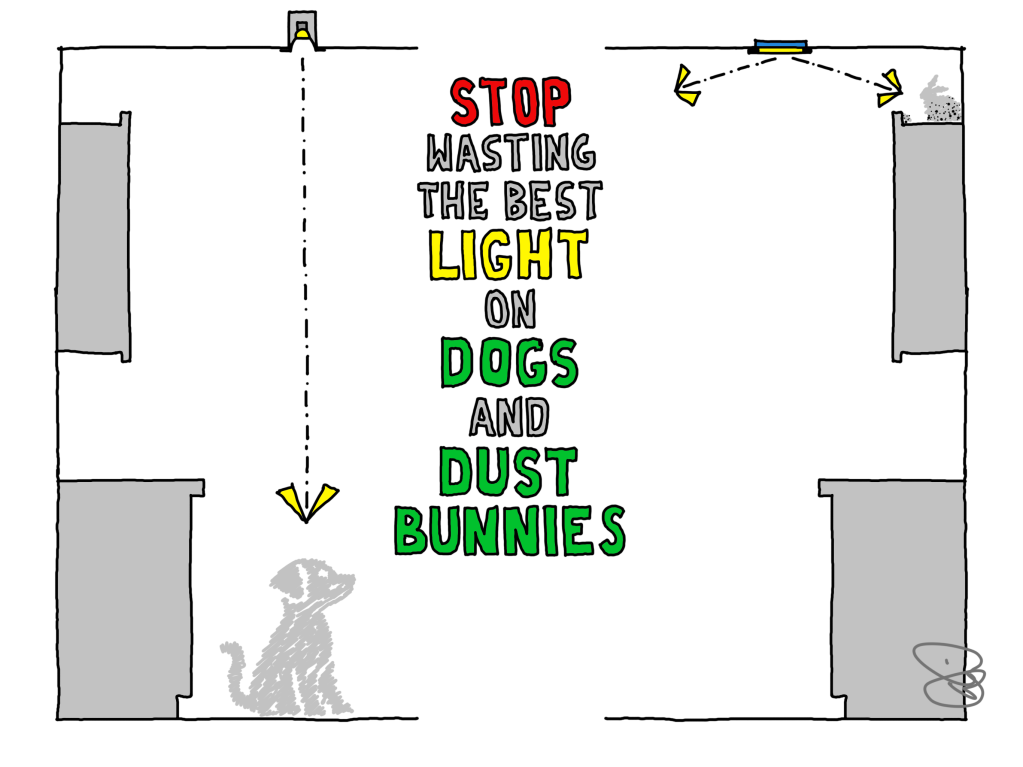In most of our kitchens, we prioritize our dogs or the dust bunnies that inevitably collect on top of cabinets, range hoods, and refrigerators.
At least when planning light.
We might put more money into our countertops, cabinets, backsplashes, sinks, and appliances than our floor, but we are systematically using the best light in the room for everything but those items.
Many kitchens, especially those more recently built, are illuminated primarily by recessed downlights or, more likely, disc lights. Downlights can be a good tool for illuminating kitchen counters, but like the illustration above indicates, most are placed as if the dog is the primary resident and not the humans. Disc lights, also called wafer lights, pancake lights, and a lot of other misleading but clever marketing names, emit light in an entirely different way that lets light “die” before it reaches the important stuff.
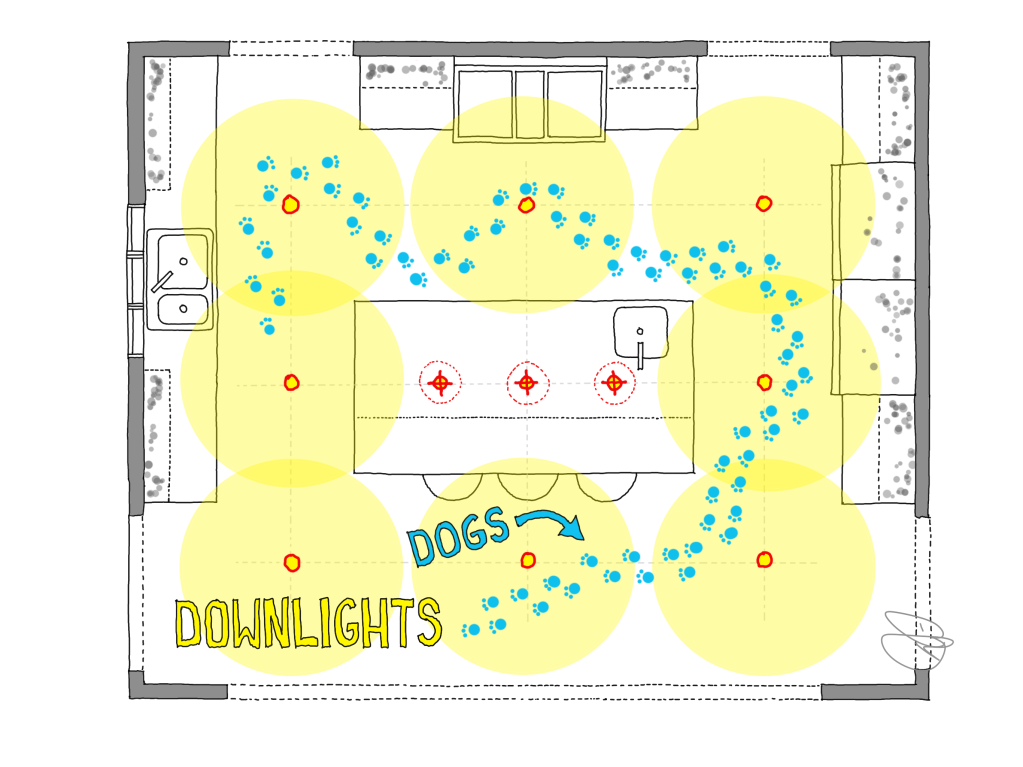
Here is a kitchen plan of the variety we see quite regularly. There is an island in the middle with three pendants and a nice and tidy grid of lights – either recessed downlights or disc lights – in a pattern that, if it were a gas station or Walmart, would be ideal for flooding the space with cheap light.
When using recessed downlights in these locations, the best light will be delivered to the floor directly beneath the light fixture itself. As the illustration shows, this is the dog’s territory (or the toddler’s, but they usually grow out of it).
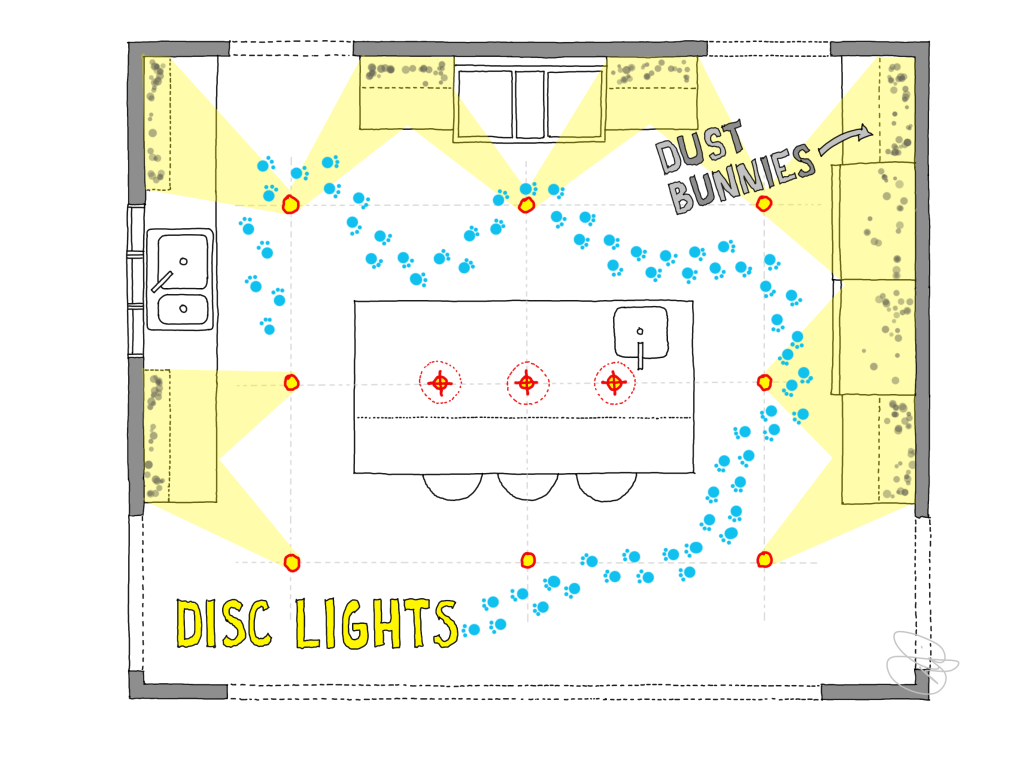
Swap the recessed downlights out with disc lights and, even though the locations stay exactly the same, the strongest light in the room will move to an entirely different location: the dust bunnies. Why the change?
Disc and wafer lights emit light in a pattern than can be difficult to explain, though it is quite easy to see when compared side-by-side in real life.
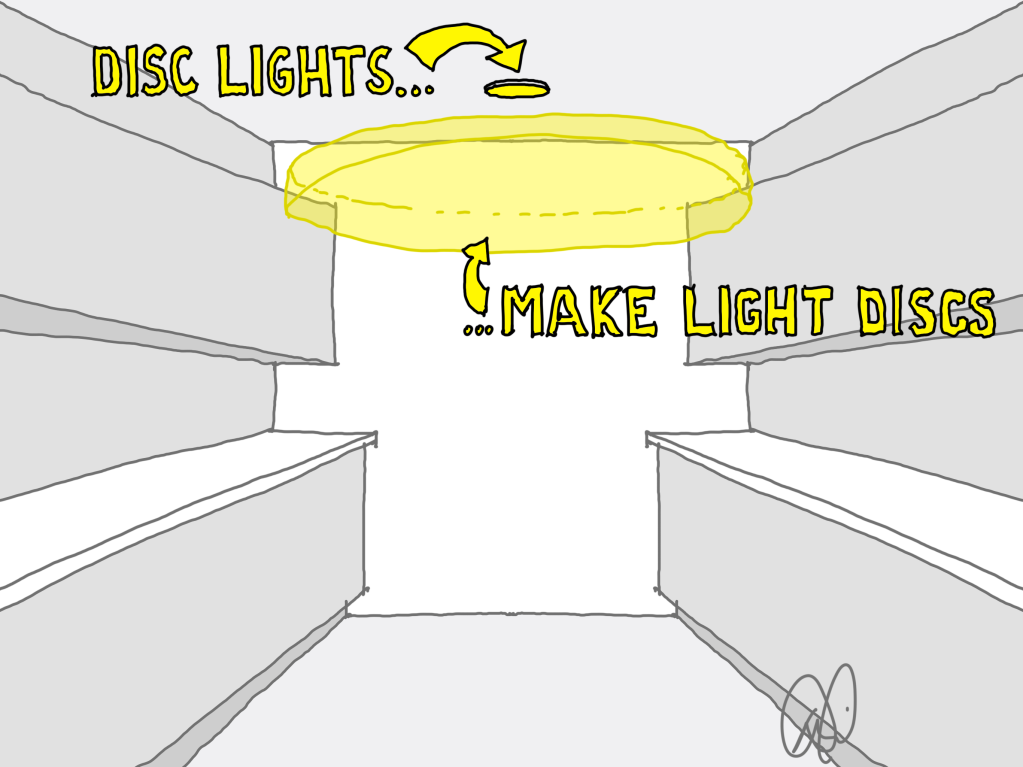
Here’s one way to understand the difference: disc lights make light discs, while downlights push light down.
The physics of light, on which I am no expert, dictate that light from a frosted surface like the disc light will spread out quickly and therefore fade out quickly. They may push out a lot of raw units of light (lumens, in this case), but those lumens struggle to reach the counters.
Instead, a disc of light floats in the air up near the ceiling, usually above the cabinets. Most of this light will be wasted in space, while some might hit the very tops of the cabinets or the dust bunnies lurking on top.
So if downlights for dogs and disc lights for dust bunnies are not the right choice, what is?
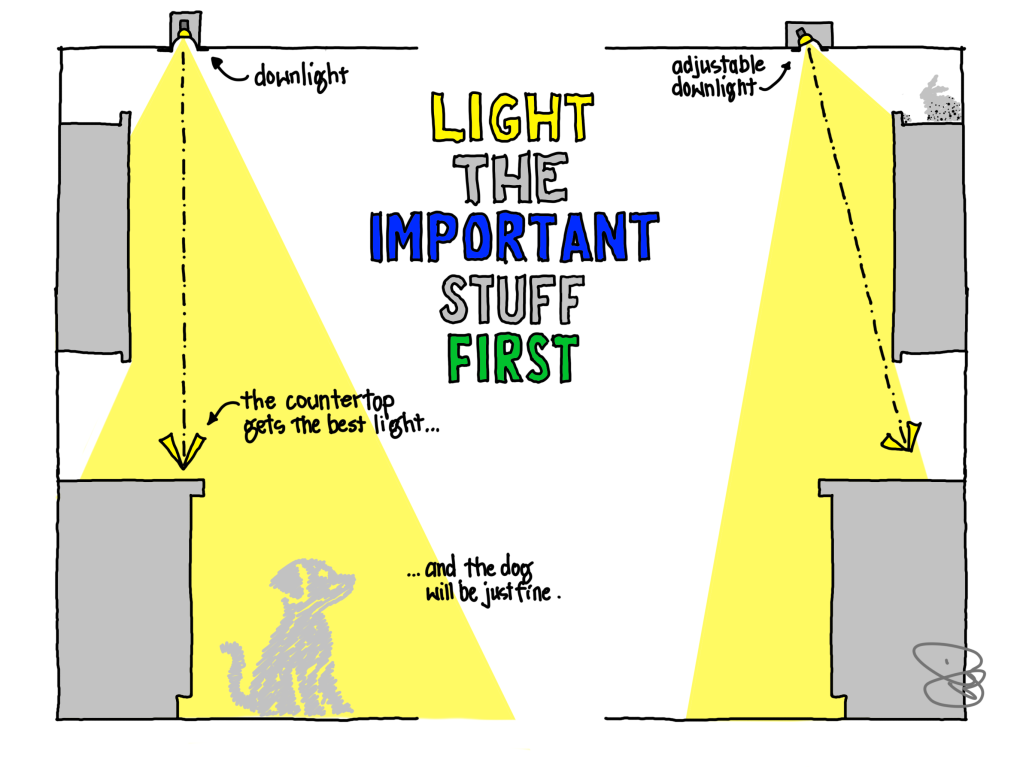 It often feels odd to me that a basic rule of lighting design – light the important stuff – needs to be explained at all. But most of us have better things to do than learn all about light. When it comes to kitchens, this rule is doubly important because you use sharp knives and extreme heat, all in a room where plugging in a floor lamp is not often practical.
It often feels odd to me that a basic rule of lighting design – light the important stuff – needs to be explained at all. But most of us have better things to do than learn all about light. When it comes to kitchens, this rule is doubly important because you use sharp knives and extreme heat, all in a room where plugging in a floor lamp is not often practical.
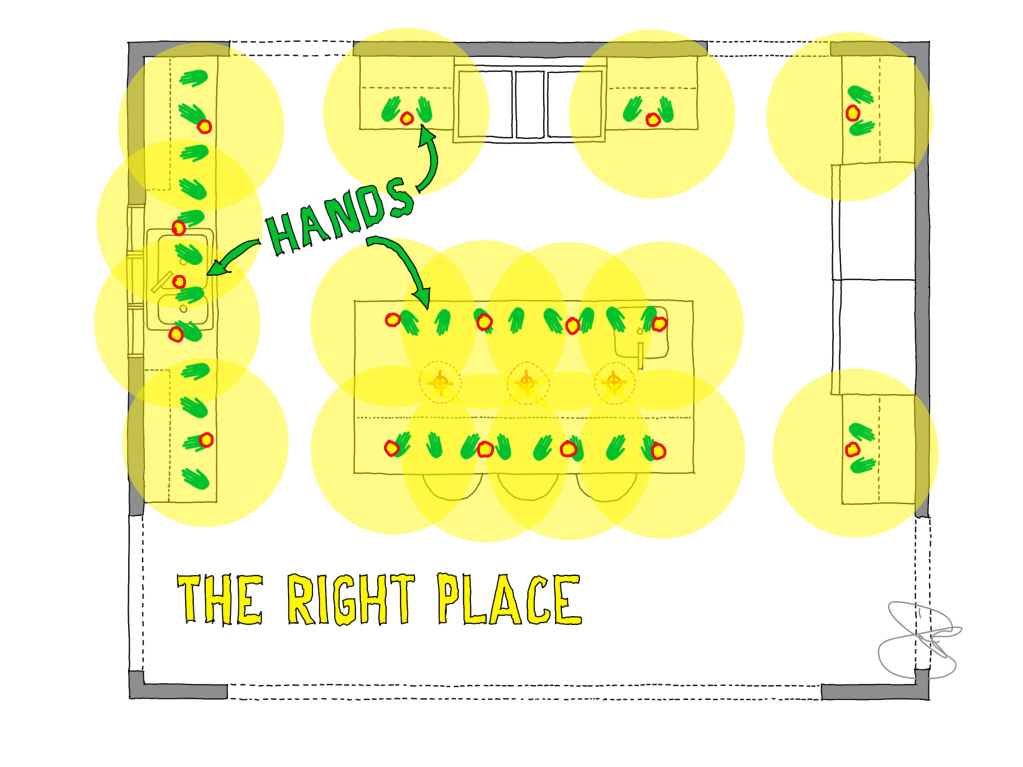
Let’s go back to plan view and, instead of dogs and dust bunnies, let’s look at where our hands go. In a kitchen, it is easy to predict where most of the work will occur. Once the countertops and work surfaces are identified, it does not take a rocket scientist to put the lights where the will do the most good – over those same countertops and work surfaces.
Yes, I left the cooktop without downlights overhead. Range hoods, vent hoods, and appliances over cooktops block out most of the light from reaching the cooking surface, which makes it very important to consider lighting when choosing a hood. Getting better light over the cooktop without the help of a well-designed hood is, well, not a solve-in-a-single-blog-post kind of a thing.
Note the new locations of the circles – the lights – on the plan. They all moved to deliver light to the hands – if proper recessed downlights are used and disc lights are avoided.
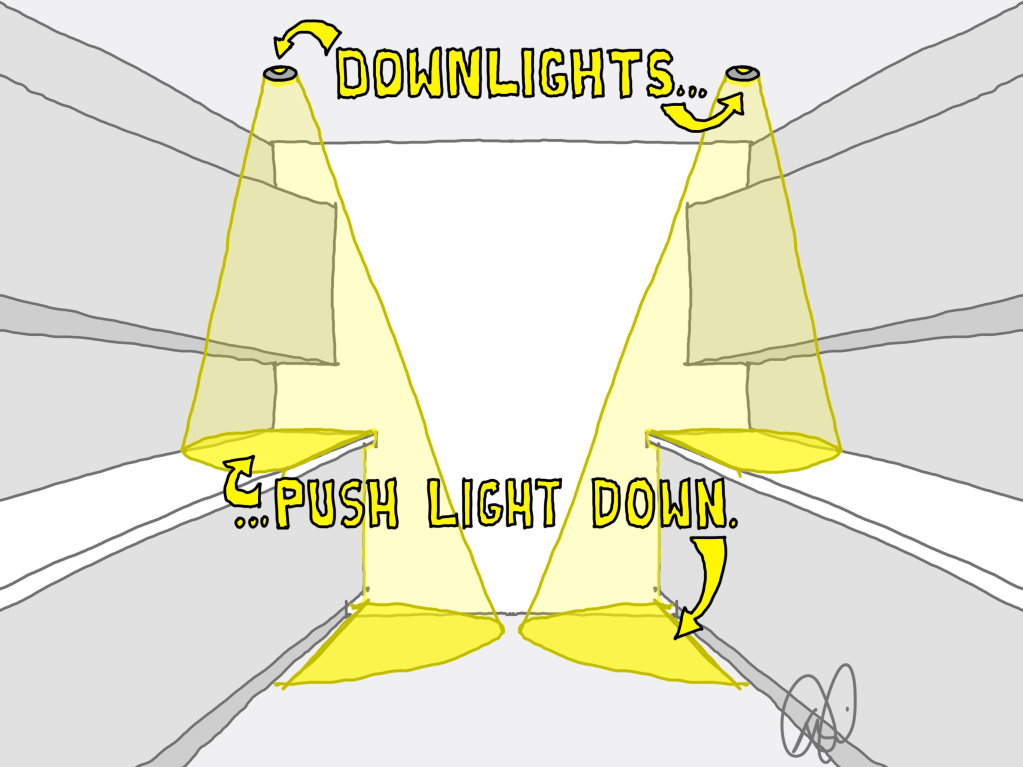
If disc lights make light discs, what do downlights do? They push light down. You could put the nicest of disc lights in the right locations, but they would still be the wrong light (unless dust bunnies are your intended target, because they will be even better lit than before).
One of the most common questions I hear when proposing a lighting plan for hands and work surfaces is “don’t I need lights over the walkway?” In a word, no. You do not need lights over the walkway. But it would be helpful to have light on the walkway.
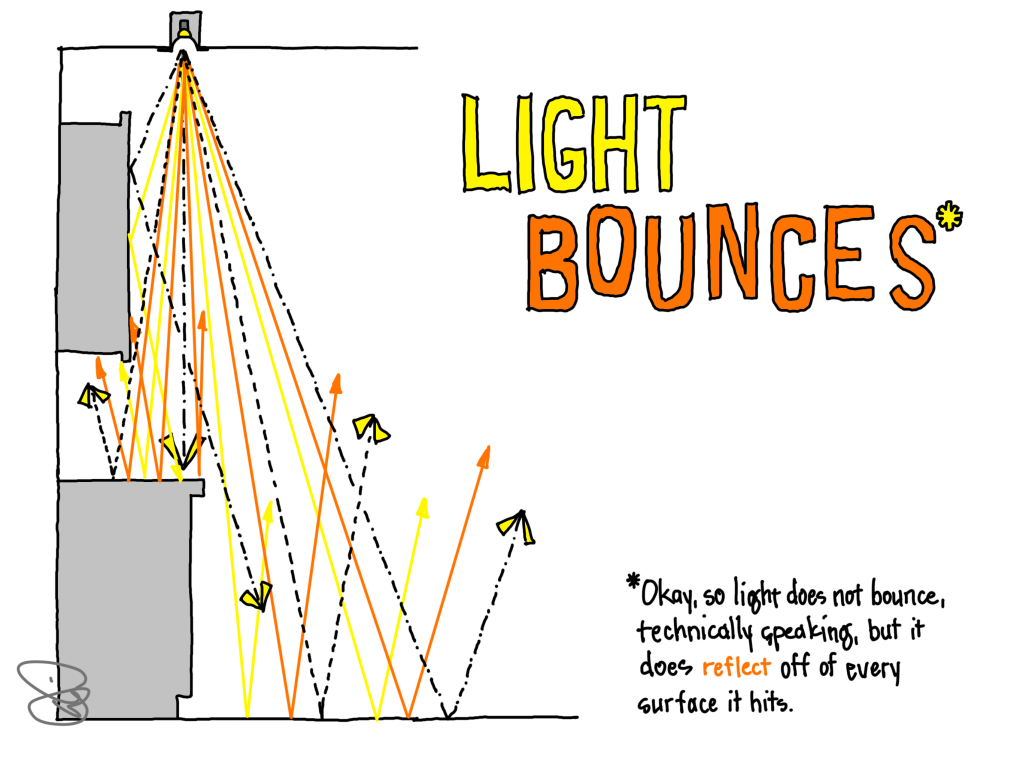
The good news is that light bounces, or rather reflects, off nearly everything it hits. So light coming from a recessed downlight, aimed at cabinets and counters, will bounce off those same cabinets and counters and “fill” the room with reflected light. In most cases, recessed downlights over the countertops and island will provide plenty of light in between, so the dog will be able to find the carrot you dropped.
Get the right light (not a disc light) in the right place (where humans need it, not the dogs and dust bunnies) and you will be well on your way to a more functional kitchen. And guess what? Add in a few more layers like undercabinet lighting and you will end up with a kitchen that looks as good as it works.
Read more on kitchens HERE.
Read more on disc/wafer lights HERE.
